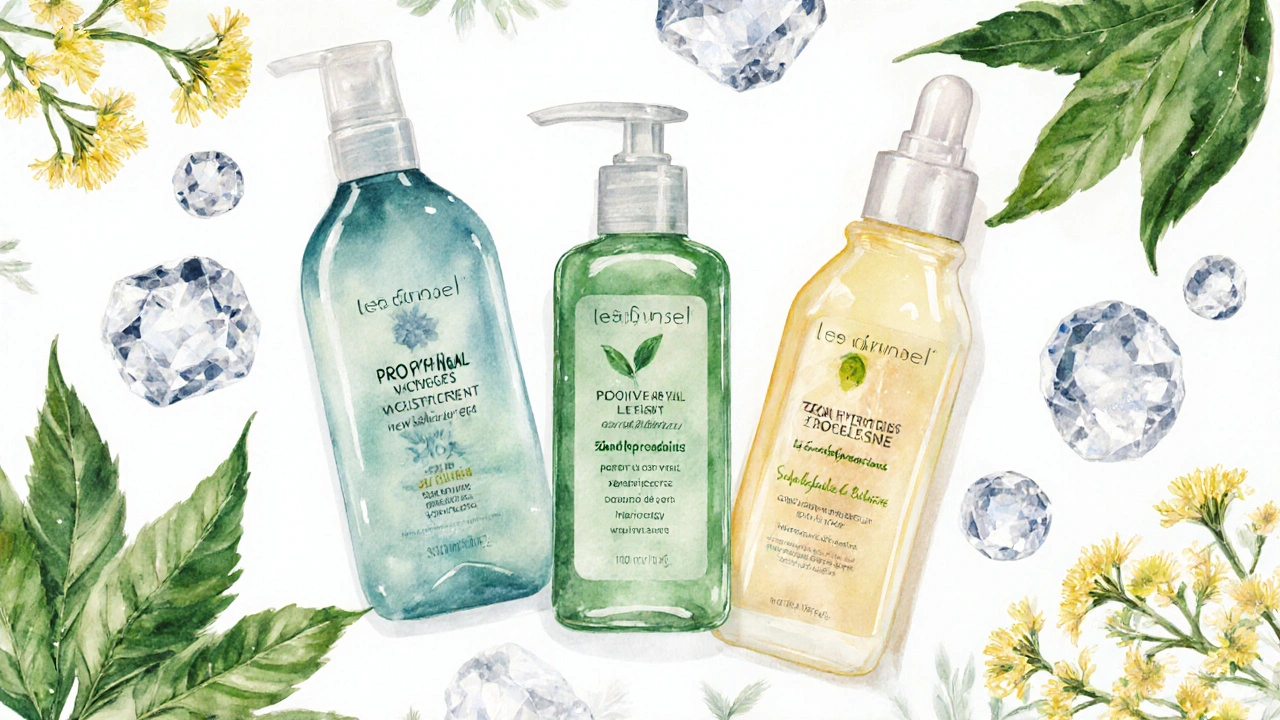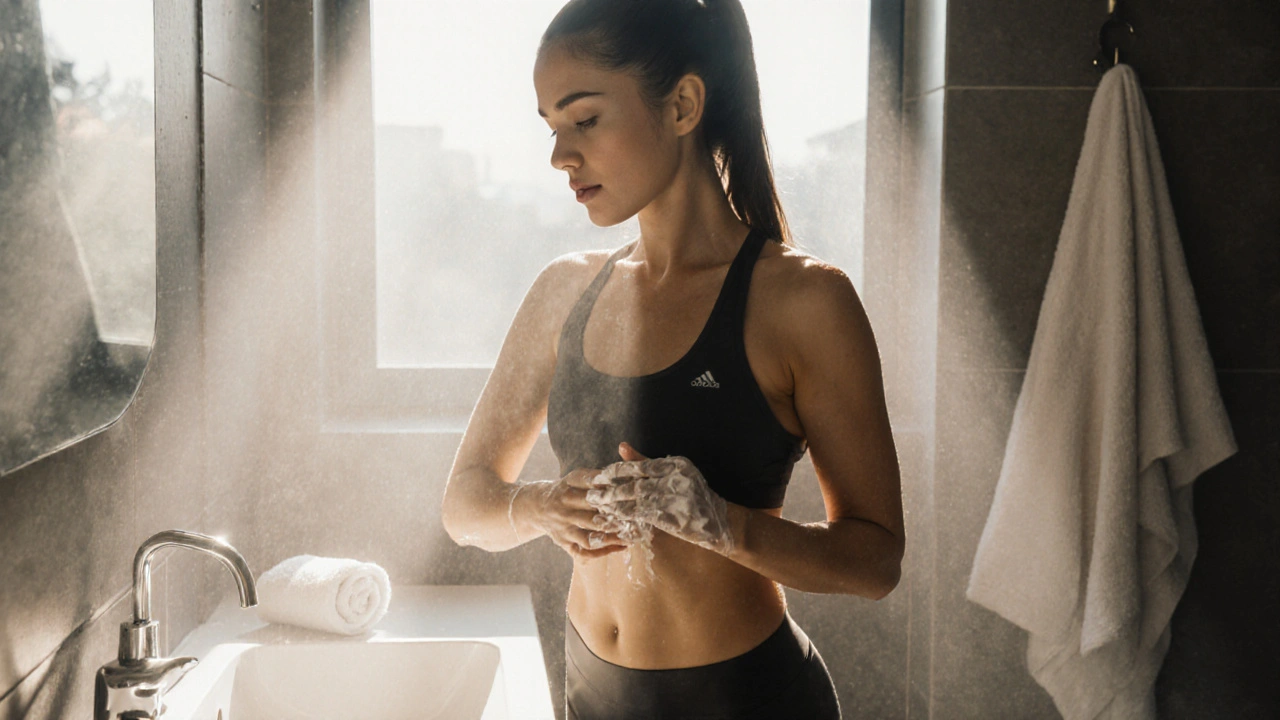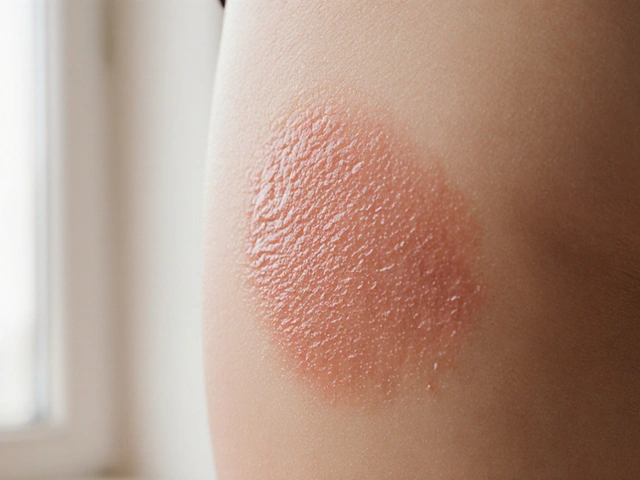
Yeast Skin Infection Product Finder
Find Your Best Skincare Match
Get personalized recommendations for yeast-prone skin products based on your specific needs.
Application Tip
Dealing with a stubborn yeast infection on the skin can feel like an endless cycle of itching, redness, and flare‑ups. The right skincare routine can break that cycle, but you need products that do more than just moisturize - they must keep the fungus at bay without irritating delicate skin.
Skincare products for yeast‑prone skin are a niche group of moisturizers, cleansers, and body washes formulated with antifungal ingredients that help control yeast infection of the skin while maintaining the skin’s barrier.What Triggers Yeast Overgrowth on the Skin?
Yeast infections, most commonly caused by Candida, thrive in warm, moist environments. A few everyday culprits can tip the balance:
- Heavy, non‑breathable fabrics that trap sweat.
- Over‑drying soaps that strip natural oils.
- High‑sugar diets that feed the fungus.
- Antibiotic or corticosteroid use that disrupts normal flora.
When the skin’s protective layer is compromised, Candida can multiply, leading to redness, scaling, and that familiar itching sensation.
How Skincare Helps-or Hurts-Yeast‑Prone Skin
Choosing the wrong product can make the problem worse. Fragranced cleansers, alcohol‑based toners, and heavy occlusive creams create an environment where yeast loves to grow. In contrast, formulas that contain antifungal ingredients such as tea tree oil, zinc pyrithione, or lactobacillus extracts actively suppress Candida while soothing inflammation.

Key Ingredients to Look For
Not all antifungal agents are created equal. Here’s a quick cheat‑sheet of the most effective ones for everyday skincare:
- Tea tree oil - a natural antiseptic that disrupts fungal cell walls.
- Zinc pyrithione - a mineral that reduces yeast colonisation, commonly used in dandruff shampoos.
- Lactobacillus ferment - a probiotic ingredient that restores healthy skin flora.
- Caprylic‑capric triglyceride - a gentle emollient that won’t feed yeast.
- Chamomile extract - calm inflammation without feeding the fungus.
Top Recommended Products (2025)
| Product | Key Antifungal Ingredient | Best Skin Type | Price (US$) | Pros | Cons |
|---|---|---|---|---|---|
| DermCare Yeast‑Guard Body Wash | Tea tree oil (2%) | Normal to oily | 12‑15 | Refreshing scent, fast‑acting, sulfate‑free | Light scent may irritate highly sensitive users |
| CalmSkin Probiotic Moisturizer | Lactobacillus ferment (1.5%) | Dry, eczema‑prone | 18‑22 | Restores flora, non‑greasy, fragrance‑free | Thicker consistency takes time to absorb |
| PureShield Zinc Pyrithione Lotion | Zinc pyrithione (1%) | Combination, sweaty areas | 14‑16 | Excellent anti‑yeast performance, leaves a matte finish | May leave a slight white cast on very dark skin tones |
Choosing the Right Product for You
Not every product suits every situation. Use this quick guide:
- If you sweat a lot during workouts - go for the Zinc Pyrithione Lotion; its matte finish keeps moisture away.
- If you have dry, flaky patches - the Probiotic Moisturizer adds needed hydration without feeding the fungus.
- If you prefer a shower‑first routine - the Tea Tree Body Wash clears yeast before you even dry off.
Always patch‑test a new product on a small area for 48hours before full application.

Application Tips & Common Pitfalls
Even the best formula can fall flat if you use it wrong. Follow these steps for maximum effect:
- Cleanse with a gentle, antifungal‑infused body wash. Rinse thoroughly and pat dry - don’t rub.
- Apply the chosen moisturizer while the skin is still slightly damp to lock in moisture.
- Focus on problem zones (inner thighs, groin, under‑breasts) with a thin layer; more isn’t better.
- Re‑apply after sweating, swimming, or any activity that leaves the skin damp.
Avoid these missteps:
- Using heavy, scented creams that contain sugars or oils.
- Skipping the rinse after a wash; residue can feed yeast.
- Wearing tight, non‑breathable clothing for long periods.
Quick Summary / Key Takeaways
- Yeast‑prone skin needs antifungal ingredients, not just moisturization.
- Tea tree oil, zinc pyrithione, and lactobacillus are the most effective agents in 2025.
- Top three products: DermCare Yeast‑Guard Body Wash, CalmSkin Probiotic Moisturizer, PureShield Zinc Pyrithione Lotion.
- Match product type to your skin’s moisture level and activity pattern.
- Patch‑test and keep skin dry after applying to prevent re‑colonisation.
Frequently Asked Questions
Can regular moisturizers cause yeast infections?
Yes, if they contain heavy oils, sugars, or fragrance, they can trap moisture and feed Candida. Choose lightweight, antifungal‑infused formulas instead.
How often should I use antifungal skincare?
Start with twice‑daily application during a flare, then taper to once a day once symptoms improve. Maintenance once every other day can keep recurrence low.
Is tea tree oil safe for sensitive skin?
In concentrations under 5% it’s generally safe, but always do a patch test. If you notice burning, discontinue use immediately.
Can diet affect skin yeast infections?
High‑sugar and refined‑carb diets can feed Candida across the body, including the skin. Reducing sugary foods and increasing probiotic‑rich foods helps control flare‑ups.
Should I still see a doctor if my skin improves with these products?
If symptoms persist beyond two weeks or spread, consult a dermatologist. Persistent infection may need prescription‑strength antifungals.



People who ignore basic hygiene while flaunting scented lotions are basically inviting fungal overgrowth.
I’ve spent a good deal of time dissecting how skin ecosystems respond to different climates, and the British humidity essentially creates a perfect breeding ground for Candida if you’re not careful. That’s why the emphasis on breathable fabrics in the article is spot‑on. The zinc pyrithione lotion mentioned works because it reduces the moisture layer that fungus loves. You’ll also notice that many over‑the‑counter dandruff shampoos contain the same ingredient, proving it’s not a gimmick. Bottom line: a strategic product choice paired with proper drying habits will keep the yeast at bay.
The probiotic moisturizer stands out because it not only hydrates but also introduces beneficial bacteria that compete with Candida. This dual action is something many conventional creams lack. Its fragrance‑free formula also prevents irritation, which can otherwise compromise the skin barrier. For anyone with dry or eczema‑prone skin, this could be a game changer. I’d recommend patch testing as the article wisely suggests.
The article’s reminder to avoid heavy, sugary lotions resonates with anyone who’s battled persistent itching. Simple swaps like cotton underwear and non‑comedogenic moisturizers make a noticeable difference. Also, reducing refined carbs can subtly lower overall Candida load. Consistency in these habits is key, not occasional effort.
Absolutely, the probiotic angle is a welcome addition to the usual anti‑yeast arsenal; it feels like feeding the good guys instead of just fighting the bad ones.
While the guide lists solid options, it glosses over the fact that many users simply slap on any “anti‑fungal” product without considering personal sensitivities. That lazy approach can backfire, causing more irritation than relief. Moreover, the price point of some of these items puts them out of reach for many, which the article barely acknowledges. A real solution should also discuss affordable alternatives or DIY options. Otherwise, it feels like a marketing blurb rather than genuine advice.
Reading about the zinc pyrithione lotion felt like a breath of fresh air amid the gloom of chronic itch; its matte finish practically screams confidence for anyone who sweats during workouts. Imagine stepping out of the gym feeling dry and not constantly worrying about a flare‑up. That kind of empowerment is exactly what skin‑prone folks need.
Simple tip: after showering, pat skin dry instead of rubbing; it leaves less moisture for yeast to grow.
Great list! 👍 Keep it up, folks!
When you look at the underlying science, the effectiveness of tea tree oil comes from its terpinen‑4‑ol component, which actively disrupts fungal cell membranes. This mechanism is well‑documented in dermatological studies and isn’t just a marketing buzzword. Zinc pyrithione, on the other hand, works by binding to the metal ions that yeast needs for metabolic processes, essentially starving the organism. The probiotic lactobacillus ferment does something different; it populates the skin’s microbiome with beneficial microbes that outcompete Candida for nutrients and space. Together, these ingredients address both the cause and the symptom, which is a more holistic approach than plain moisturizers. The article correctly points out that fragrance can exacerbate irritation, and many “natural” products still hide hidden essential oils that act as sugars for the fungus. A frequent mistake is applying a heavy cream after a shower, which traps residual moisture and creates a perfect incubator. By applying a thin layer of a non‑occlusive formula while the skin is still slightly damp, you lock in hydration without sealing in water. Additionally, consistent use of an antifungal body wash removes excess yeast on the surface, reducing the inoculum load. For active individuals, re‑applying after sweaty workouts can prevent re‑colonisation that often leads to recurrent patches. Clothing choice matters as well; breathable fabrics like modal or bamboo allow evaporation and reduce humidity on the skin. Diet also plays an understated role; cutting back on refined sugars deprives Candida of its preferred fuel source. Probiotic supplements, whether oral or topical, can further support a balanced microbiome, though they should be introduced gradually. Finally, remember that severe or persistent cases may require prescription‑strength treatment, as over‑the‑counter products have their limits. Combining these lifestyle tweaks with the right skincare creates a robust defense system against yeast overgrowth.
These recommendations hit the mark, especially the emphasis on a matte finish for sweaty zones – finally something that doesn’t leave a greasy residue! 😉
Thanks for the clear summary; easy to follow.